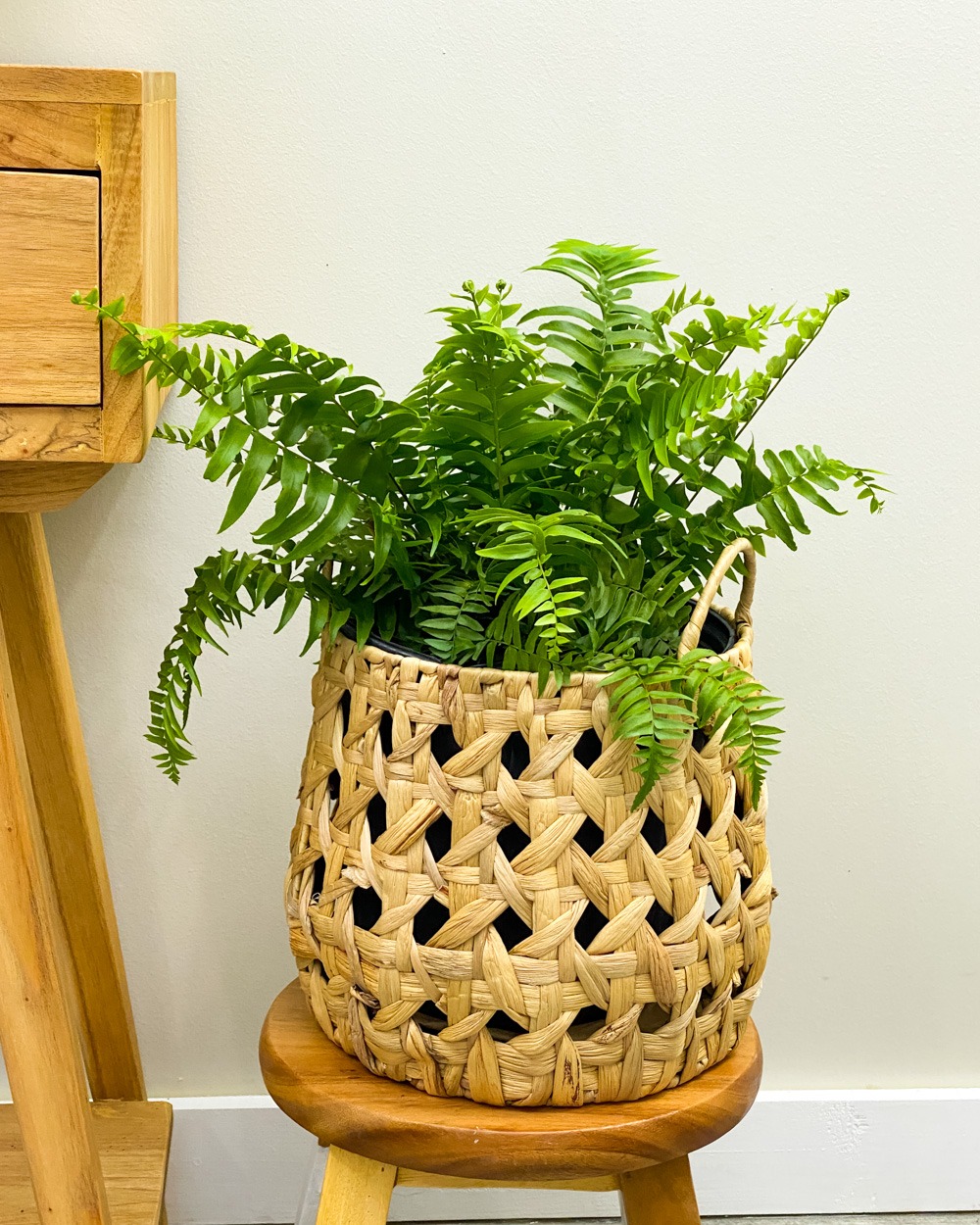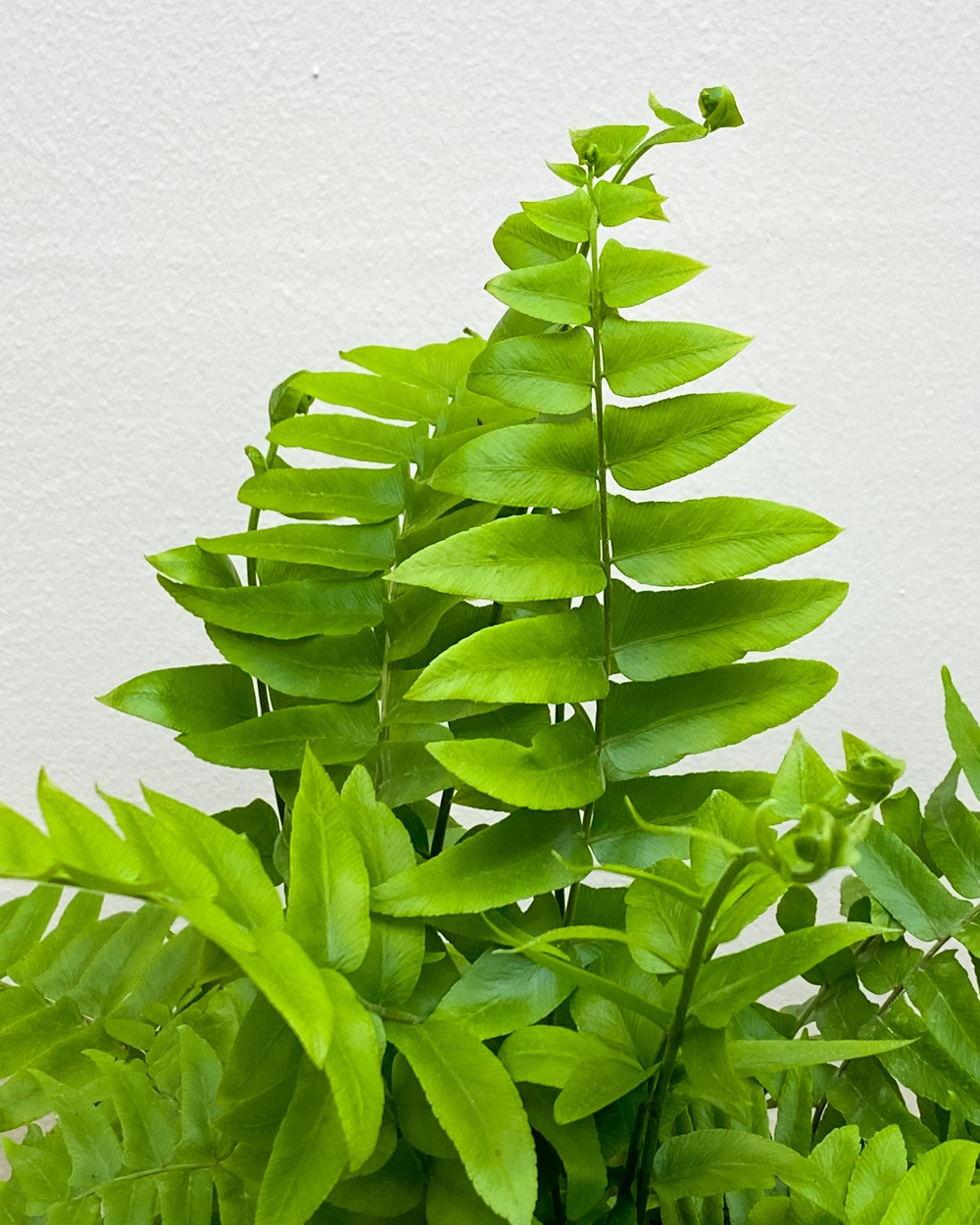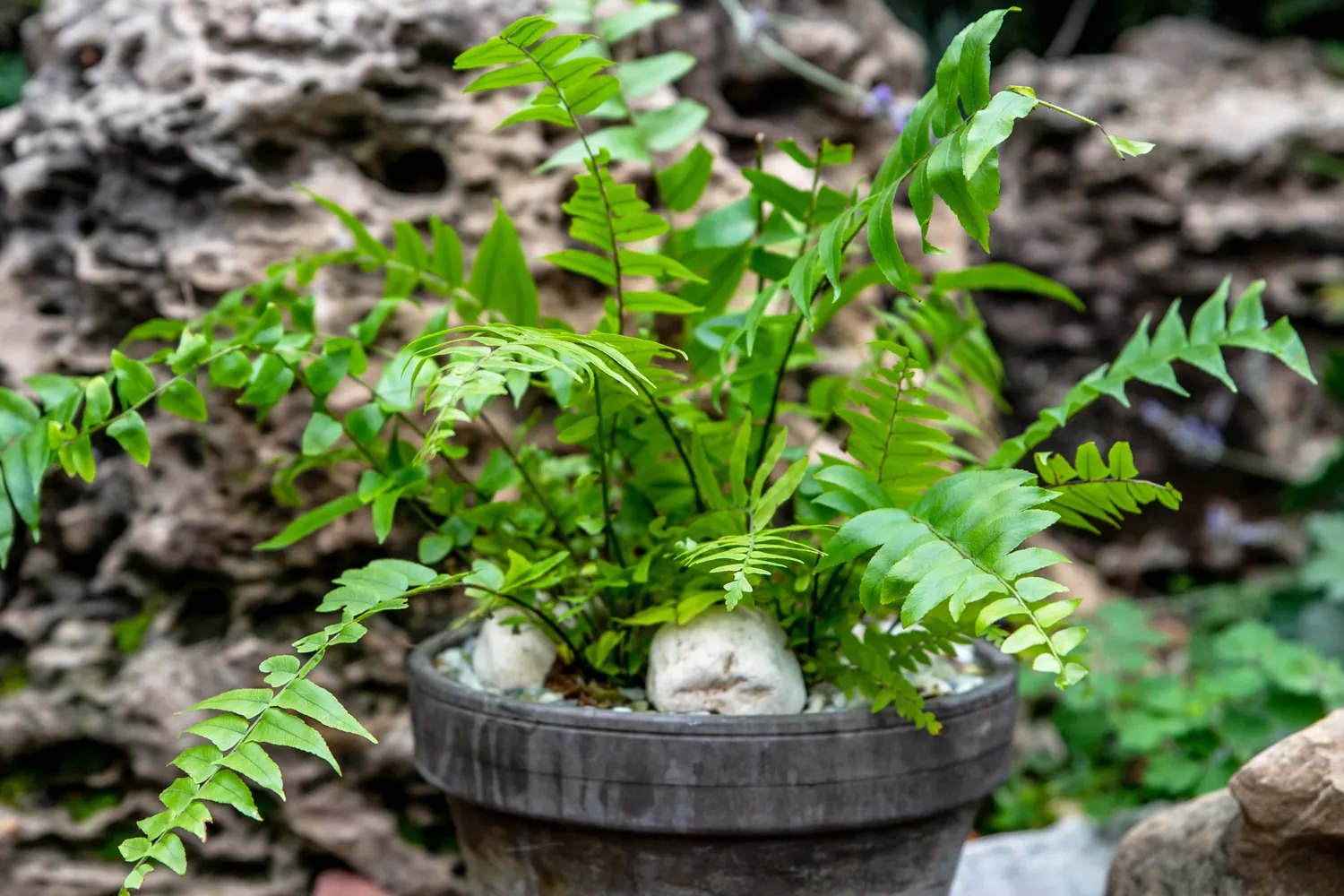With their lush, vibrant fronds, Macho ferns make a striking addition to any indoor or outdoor space. Often called sword ferns for their stiff, upright foliage, they are admired for their almost prehistoric appearance and their ability to thrive with minimal care.
Macho ferns, scientifically known as Nephrolepis biserrata, belong to the Nephrolepidaceae family of ferns. They are native to Mexico, Central America, and parts of South America. Some common varieties of Macho ferns include Giant sword fern, Mexican sword fern, and Macho fern
They are evergreen perennial plants that can grow quite large over time. At maturity, their upright fronds can reach heights of 3-4 feet tall and widths of 3-5 feet across. With a naturally vase-shaped habit, the fronds emerge from a central crown or root ball.
Macho ferns have stiff, leathery pinnae (leaflets) arising from a central rachis (stem) that gives them their sword-like appearance. The pinnae may reach lengths of 18 inches. Young fronds emerge with a striking copper tone before maturing to a rich green.
While they resemble other sword ferns, they can be distinguished by their taller height and more rigid fronds that stand perfectly upright. They also tolerate lower light and drier soil than many other ferns.
| Botanical Name | Nephrolepis biserrata |
| Plant Family | Nephrolepidaceae (sword fern family) |
| Common Varieties | Giant Sword Fern, Mexican Sword Fern, Macho Fern |
| Plant Type | Evergreen Perennial Fern |
| Mature Size | 3-4 feet tall, 3-5 feet wide |
| Growth Habit | Upright, vase-shaped |
| Foliage | Stiff, leathery, sword-shaped pinnae (leaflets) with coppery-green new growth |
| Sunlight | Part sun to full shade |
| Soil | Well-draining potting mix or loam |
| USDA Zones | 9 – 11 |
| Exposure | Part sun to full shade |
Planting Macho Ferns
Macho ferns can be planted outdoors in frost-free climates or grown as houseplants in colder zones.
The best times to plant or transplant them are during the spring after the last frost or early fall before the first frost. This gives their root systems time to establish before heat, cold, or drought strains the plant.
When choosing an outdoor location, select a site with bright indirect light or partial shade. Areas with morning sun and afternoon shade are ideal. Shelter the fern from strong winds, which can shred its fronds.
For Indoors, place your plant near an east, west, or north-facing window where it will receive consistent ambient light but no direct sun. Direct southern exposure is usually too intense.
Soil Preparation:
- Prepare a planting area in a rich, loose, well-draining soil amended with compost or peat moss. Clay soils do not provide enough drainage for ferns.
- Test the soil – ferns prefer a slightly acidic soil pH between 6.0 and 6.5. Space multiple ferns 2-3 feet apart to allow good air circulation as they mature.
How to Plant:
- Dig a hole the same depth and twice as wide as the fern’s root ball.
- Carefully remove the plant from its nursery pot, loosen any circled roots, and place it in the hole.
- Backfill the hole with soil, tamping gently to remove air pockets.
- Water thoroughly after planting.
- Apply a 2-4 inch layer of mulch around the fern, taking care not to pile mulch against the crown.


Macho Fern Care
Caring for Macho ferns is simple since they adapt readily to indoor and outdoor environments. Follow these tips to keep them healthy and lush:
Light
Macho ferns thrive in medium to bright indirect light. Indoors, place them near an east or west-facing window. Outdoors, choose a location with morning sun and afternoon shade. Although they tolerate low-light areas, their growth will slow and fronds may thin out or drop.
Temperature
Daytime temperatures between 65-80°F suit them the best. Move this indoor plant to a cooler location at night. They can tolerate slightly lower temperatures at night down to 50°F.
Outdoor Macho ferns only thrive year-round in frost-free climates, making them popular landscaping plants for zones 9-11.
Humidity
Macho ferns appreciate average to high humidity around 40-60% relative humidity. Mist fronds daily or place pots on a pebble tray filled with water to increase moisture in the air. Use a humidifier during dry winter months.
Soil
Macho ferns need rich, acidic, well-draining soil. Prepare an evenly moist, porous planting mix for containers by combining quality potting soil, peat moss or compost, and perlite or bark chips. Outdoor ferns thrive in loose, organic soil amended with compost.
Water
Allow the top 1-2 inches of soil to dry between waterings, then water thoroughly until it drains freely from the pot’s bottom holes. Outdoor ferns appreciate a weekly deep soaking if rain is lacking. Consistently soggy soil can cause root rot.
Fertilizer
Feed container-grown ferns monthly during the growing season with a balanced liquid fertilizer diluted by half. Outdoor ferns benefit from a slow-release granular fertilizer scratched lightly into the soil in early spring.
Pruning
Pruning is generally not necessary, but removing dead or damaged fronds keeps your fern looking tidy and encourages new growth. Simply use clean shears to trim any unsightly fronds back to the base.
You can also prune for shape if desired. Carefully trim only the outer edges of the fronds to maintain a rounded silhouette.
Common Problems With Macho Ferns
When provided with suitable growing conditions, Macho Ferns are quite robust and trouble-free. However, here are some potential issues to watch for:
- Leaf tip burn – Brown, crispy leaf tips indicate too much sun or inconsistent watering. Move to a shadier spot and improve moisture maintenance.
- Root rot – Caused by overly wet soil, root rot manifests as yellowing leaves, stunted growth, and dark mushy roots. Improve drainage and allow soil to dry out between waterings.
- Pests – Scale, spider mites, and mealybugs may sometimes infest plants. Apply appropriate organic pest treatments if populations become problematic. Be sure to isolate affected plants.
Displaying Macho Ferns in Your Home
The stiff, upright fronds of Macho ferns make a striking floor plant or focal point. Their large size suits them well as stand-alone specimens in a corner or at the back of a group planting.
Use Macho ferns to create a lush, tropical look on covered outdoor living spaces like patios, porches, and poolside areas. Their height draws the eye upward while taking up minimal floor space.
For Indoors, allow enough floor space to reach their mature sizes. Situate them in front of large bright windows or where their foliage can be backlit. Avoid placing ferns in drafty areas or small spaces with stagnant air, which increases their susceptibility to pests and diseases.
FAQs
While Macho Ferns tolerate more sun than other ferns, allowing them to take full sun is not recommended. They prefer bright indirect light or a few hours of morning sun followed by afternoon shade. Full sun will likely cause leaf scorch.
No, Macho ferns are non-toxic to humans and pets. This makes them a good choice for homes with children or animals.
Applying Epsom salts (magnesium sulfate) can benefit Macho ferns. It helps them uptake nutrients, increases chlorophyll production for greener foliage, and improves disease resistance. Mix 1 tablespoon of Epsom salts per gallon of water and apply monthly during the growing season.
The best ways to keep Macho fern fronds vibrant green are by providing the right amount of indirect sunlight, consistent soil moisture, monthly fertilization, and adequate humidity. Prune any yellowing fronds to stimulate new bright growth. Avoid direct sun exposure, drought stress, and hot or cold drafts which can fade foliage.
